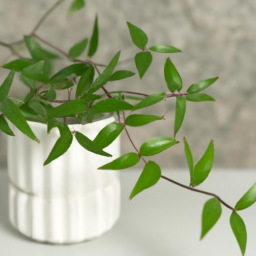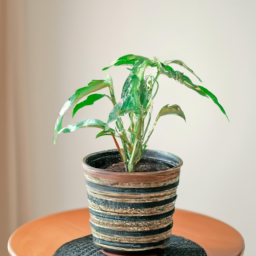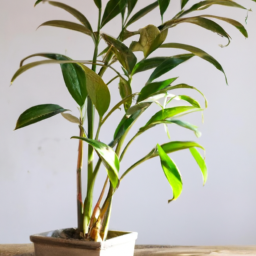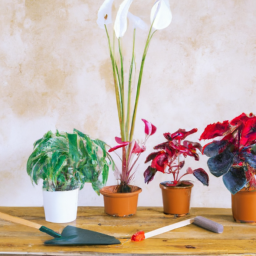
As we enter the new year, many of us are looking for ways to refresh and revitalize our living spaces. One simple and effective way to do just that is by bringing indoor plants into our homes. Indoor plants in the new year can provide a fresh start for your greenery, bringing life and vibrancy to any room. Whether you’re a seasoned plant parent or just starting out, incorporating indoor plants into your space can have numerous benefits for both your physical and mental well-being. So, let’s dive into the world of indoor plants and discover how they can transform your living environment for the better.
The Benefits of Indoor Plants for a Fresh Start in the New Year
Introduction
Welcome to the new year, a time for fresh starts and rejuvenation. As we embark on this journey, why not consider bringing some greenery into your indoor spaces? Indoor plants not only add beauty and aesthetics to your home or office but also offer numerous benefits for your overall well-being. In this article, we will explore the various advantages of having indoor plants and how they can contribute to a fresh start in the new year.
1. Improved Air Quality
One of the most significant benefits of indoor plants is their ability to enhance air quality. Plants naturally absorb carbon dioxide and release oxygen through a process called photosynthesis. By having indoor plants, you can create a healthier environment by increasing the oxygen levels and reducing the concentration of harmful pollutants such as formaldehyde and benzene.
Furthermore, indoor plants can help regulate humidity levels, preventing dryness in the air during winter months when heating systems tend to dry out the indoor environment. This can alleviate respiratory issues, dry skin, and even reduce the chances of catching a cold or flu.
So, as you start the new year, consider introducing plants like peace lilies, spider plants, or snake plants to your indoor spaces to enjoy cleaner and fresher air.
2. Stress Reduction and Mental Well-being
Indoor plants have been proven to have a positive impact on mental health and well-being. Research suggests that being surrounded by nature, even in the form of indoor plants, can reduce stress levels and promote relaxation.
The presence of indoor plants can help create a calming and tranquil atmosphere, making your living or working space more inviting and peaceful. Their green color has a soothing effect on the mind and can contribute to a sense of serenity and harmony.
Additionally, taking care of indoor plants can be a therapeutic activity that allows you to connect with nature and take a break from the demands of daily life. The act of nurturing plants can provide a sense of purpose and accomplishment, boosting self-esteem and overall happiness.
3. Increased Productivity and Concentration
Indoor plants have also been linked to improved productivity and concentration. Studies have shown that having plants in the workspace can enhance cognitive function, memory retention, and attention span.
The presence of indoor plants can help reduce mental fatigue and increase focus, leading to improved productivity and efficiency. Being surrounded by nature-like elements can stimulate creativity and problem-solving abilities, making indoor plants a valuable addition to your home office or workplace.
Consider placing plants like aloe vera, pothos, or succulents on your desk or near your study area to experience the positive impact they can have on your work or study habits.
Conclusion
As you embark on a fresh start in the new year, don’t overlook the benefits of indoor plants. They can improve air quality, reduce stress, enhance mental well-being, and boost productivity. By incorporating indoor plants into your living or working spaces, you can create a healthier and more harmonious environment. So, why not kickstart the new year by bringing some greenery into your life and enjoy the many advantages that indoor plants have to offer?

How to Choose the Right Indoor Plants for Your Greenery Refresh
Introduction
Welcome to the new year! It’s the perfect time to refresh your indoor space with some beautiful greenery. Indoor plants not only add a touch of nature to your home or office but also provide numerous health benefits. From purifying the air to reducing stress levels, indoor plants are a must-have for any space.
However, choosing the right indoor plants can be overwhelming, especially if you’re a beginner. With so many options available, it’s important to consider factors such as light requirements, maintenance, and the overall aesthetic appeal. In this guide, we will walk you through the process of choosing the perfect indoor plants for your greenery refresh.
Assess Your Space and Lighting Conditions
The first step in choosing the right indoor plants is to assess your space and lighting conditions. Different plants have different light requirements, and it’s essential to match them with the available light in your space. Here’s a breakdown of the different light conditions and the plants that thrive in them:
1. Bright Indirect Light: This is the ideal light condition for most indoor plants. It refers to a well-lit area away from direct sunlight. Plants like pothos, spider plants, and peace lilies thrive in these conditions.
2. Low Light: If your space lacks natural light or has limited access to windows, low-light plants are your best bet. Plants like snake plants, ZZ plants, and pothos can tolerate low-light conditions and still thrive.
3. Direct Sunlight: Some indoor plants love basking in direct sunlight. If your space receives ample sunlight, consider plants like succulents, cacti, and aloe vera. These plants thrive in bright, sunny spots.
Consider Maintenance and Care Requirements
Another crucial aspect to consider when choosing indoor plants is their maintenance and care requirements. Some plants are low-maintenance and perfect for busy individuals, while others require more attention and care. Here are a few factors to keep in mind:
1. Watering Needs: Different plants have different watering needs. Some plants like their soil to be consistently moist, while others prefer to dry out between waterings. Make sure to choose plants that align with your watering habits and lifestyle.
2. Humidity Requirements: Some plants thrive in humid environments, while others prefer drier conditions. If you live in a dry climate or have a space with low humidity, consider plants like ferns, orchids, and peace lilies that enjoy higher humidity levels.
3. Pruning and Propagation: Some indoor plants require regular pruning to maintain their shape and size. If you’re not keen on frequent pruning, opt for plants that naturally stay compact and don’t require much trimming. Additionally, consider if you’re interested in propagating your plants, as some species are easier to propagate than others.
Choose Plants That Complement Your Aesthetic
Lastly, when choosing indoor plants, it’s important to consider the overall aesthetic of your space. Indoor plants come in various shapes, sizes, and colors, allowing you to create a personalized green oasis. Here are a few tips to help you choose plants that complement your aesthetic:
1. Size and Scale: Consider the available space and choose plants that fit well. Tall plants like fiddle leaf figs make a statement in larger spaces, while smaller plants like succulents are perfect for shelves and desks.
2. Leaf Shape and Color: Indoor plants come in a wide range of leaf shapes and colors. Consider the color scheme and style of your space when choosing plants. For a minimalist look, opt for plants with simple, green foliage. If you want a pop of color, plants with variegated leaves or vibrant flowers can be a great choice.
3. Texture and Form: Plants with different textures and forms can add visual interest to your space. Consider mixing plants with smooth leaves, spiky foliage, and cascading vines to create a dynamic and visually appealing display.
By considering your space and lighting conditions, maintenance requirements, and aesthetic preferences, you can choose the perfect indoor plants for your greenery refresh. Remember to research each plant’s specific care instructions and provide them with the love and attention they need to thrive. Happy gardening!

Tips for Caring and Maintaining Indoor Plants in the New Year
Introduction
Indoor plants not only add a touch of greenery to our homes but also provide numerous health benefits. As we step into the new year, it’s the perfect time to give our beloved indoor plants a fresh start. Whether you’re a seasoned plant parent or just starting your indoor garden, these tips will help you care for and maintain your green companions throughout the year. Let’s dive in!
1. Assessing Light Requirements
One of the most crucial aspects of indoor plant care is providing the right amount of light. Different plants have varying light requirements, so it’s essential to understand the needs of your specific greenery.
Start by identifying the light levels in different areas of your home. Observe which areas receive bright, indirect light, moderate light, or low light. This will help you determine the best location for each plant.
For plants that require bright, indirect light, place them near east or west-facing windows. South-facing windows tend to provide intense direct light, so it’s better suited for plants that thrive in high light conditions. Low light plants can be placed further away from windows or in rooms with minimal natural light.
Monitoring the light levels throughout the year is essential as the sun’s position changes. Adjust the placement of your plants accordingly to ensure they continue to receive optimal light.
2. Watering and Humidity
Proper watering is crucial for maintaining healthy indoor plants. While it may seem simple, it’s important to understand each plant’s specific watering needs.
Before watering, check the moisture level of the soil by inserting your finger about an inch deep. If it feels dry, it’s time to water. Overwatering can lead to root rot, so it’s essential to avoid excessive moisture.
Consider the humidity levels in your home as well. Most indoor plants thrive in moderate humidity. If the air in your home is too dry, especially during winter months when heating systems are running, you can increase humidity by using a humidifier or placing a tray of water near your plants.
Remember, each plant has different water requirements, so it’s crucial to research and understand the needs of each individual plant in your collection.
3. Fertilizing and Soil Health
Indoor plants rely on us to provide them with essential nutrients. Fertilizing helps replenish the nutrients that may deplete over time in the potting soil.
Choose a balanced, water-soluble fertilizer specifically formulated for indoor plants. Follow the instructions on the packaging to determine the appropriate dosage and frequency of application.
Additionally, soil health plays a significant role in the overall well-being of your plants. Over time, the potting soil may become compacted, affecting drainage and nutrient absorption. Consider repotting your plants annually or as needed to ensure they have enough space for root growth and access to fresh, nutrient-rich soil.
When repotting, choose a well-draining potting mix suitable for your plants’ needs. Avoid using garden soil, as it may contain pests or diseases that can harm your indoor plants.
Conclusion
Caring for indoor plants is a rewarding and fulfilling experience. By following these tips, you can ensure your green companions thrive in the new year and beyond. Remember to assess their light requirements, water them appropriately, and provide proper fertilization and soil health. With a little love and attention, your indoor plants will bring joy and freshness to your home throughout the year.
So, let’s kickstart the new year with a fresh start for your greenery and watch your indoor plants flourish!
Let’s wrap up what we learned
As we step into the new year, it’s the perfect time to give our indoor plants a fresh start. After all, they’ve been through a lot, from surviving the holiday season with all the hustle and bustle, to enduring the dry indoor air and limited sunlight. But fear not, with a little love and care, your greenery can thrive and bring life to your home throughout the year.
First things first, it’s important to assess the health of your indoor plants. Look out for any signs of stress or disease, such as yellowing leaves or wilting. If you spot any issues, don’t panic! Start by giving your plants a good clean, removing any dust or debris that may have accumulated on their leaves. This will not only improve their appearance but also help them absorb more sunlight. Next, check the soil moisture levels and adjust your watering routine accordingly. Overwatering can lead to root rot, so make sure the top inch of soil is dry before watering again. Lastly, consider repotting your plants if they’ve outgrown their current pots. This will give them more room to grow and access to fresh, nutrient-rich soil.
Once your plants are in good shape, it’s time to give them a fresh start for the new year. Start by finding the ideal spot for each plant in your home. Consider their light requirements and place them accordingly, whether it’s near a sunny window or in a corner with low light. Remember to rotate your plants every few weeks to ensure even growth. Additionally, consider investing in a humidifier or placing a tray of water near your plants to combat the dry indoor air. Lastly, make it a habit to regularly fertilize your plants to provide them with the nutrients they need to thrive.
With a little effort and attention, your indoor plants can have a fresh start in the new year. Not only will they bring beauty and freshness to your home, but they will also contribute to a healthier and more vibrant living space. So, roll up your sleeves, grab your watering can, and let’s give your greenery the fresh start they deserve!
Curious Minds Asked, We Responded. Frequently Asked Questions:
Q1: What are some popular indoor plants to start the new year with?
A1: There are several popular indoor plants that can bring freshness to your space in the new year. Some popular choices include the Snake Plant, Pothos, Peace Lily, ZZ Plant, and Spider Plant. These plants not only add beauty to your home but also help purify the air and create a calming atmosphere.
Q2: How do I care for indoor plants during the winter months?
A2: Caring for indoor plants during the winter requires a few adjustments. Firstly, make sure to place your plants in areas with sufficient sunlight as days may be shorter. Avoid placing them near drafts or heaters to prevent temperature fluctuations. Additionally, reduce watering frequency as plants tend to require less water during the colder months. Monitor the soil moisture and adjust accordingly.
Q3: Are there any low-maintenance indoor plants suitable for beginners?
A3: Absolutely! If you’re new to indoor gardening, there are plenty of low-maintenance plants that are forgiving and easy to care for. Some great options include the Snake Plant, Pothos, and ZZ Plant. These plants can tolerate a variety of light conditions and are more forgiving if you forget to water them occasionally. They are perfect for beginners or those with busy schedules.
Q4: Can indoor plants improve air quality in my home?
A4: Yes, indoor plants can significantly improve air quality in your home. They act as natural air purifiers by absorbing carbon dioxide and releasing oxygen. Some plants, like the Peace Lily and Spider Plant, are particularly effective at removing toxins such as formaldehyde and benzene from the air. Having indoor plants can create a healthier and more refreshing environment for you and your family.
Q5: How often should I fertilize my indoor plants?
A5: The frequency of fertilizing your indoor plants depends on the type of plant and the specific fertilizer you use. As a general rule, most indoor plants benefit from monthly fertilization during the growing season (spring and summer). However, it’s essential to follow the instructions on the fertilizer packaging and adjust accordingly. Over-fertilizing can harm your plants, so it’s better to err on the side of caution and start with a lower dosage.

James Wong is a renowned ethnobotanist, plant scientist, and local television presenter. With a passion for demystifying plant science, he is known for translating complex botanical concepts into practical advice for everyday plant enthusiasts. James’s expertise spans from traditional gardening to cutting-edge plant technologies, making his insights accessible and informative.


